HI6005 T2 2019: Work Motivation and Personality Study Research Paper
VerifiedAdded on 2022/11/16
|5
|771
|94
Report
AI Summary
This report investigates the relationship between work motivation and personality, focusing on John Holland's RIASEC hexagonal themes and their application in understanding job preferences. It explores how job fit, the compatibility between an individual's personality and their job, influences motivation and performance. The report discusses the impact of personality traits on job selection and the importance of aligning job roles with individual interests to enhance dedication and reduce dissatisfaction. It also references research by Tims, Derks, Bakker, Neumann, and Kooij et al. to support the arguments, emphasizing the significance of job compatibility in fostering a motivated and productive workforce. The report serves as a tool for analyzing preferences, determining motivational factors, and assessing the impact of job fit on employee performance. This report is contributed by a student and is available on Desklib, a platform offering AI-based study tools for students.
1 out of 5
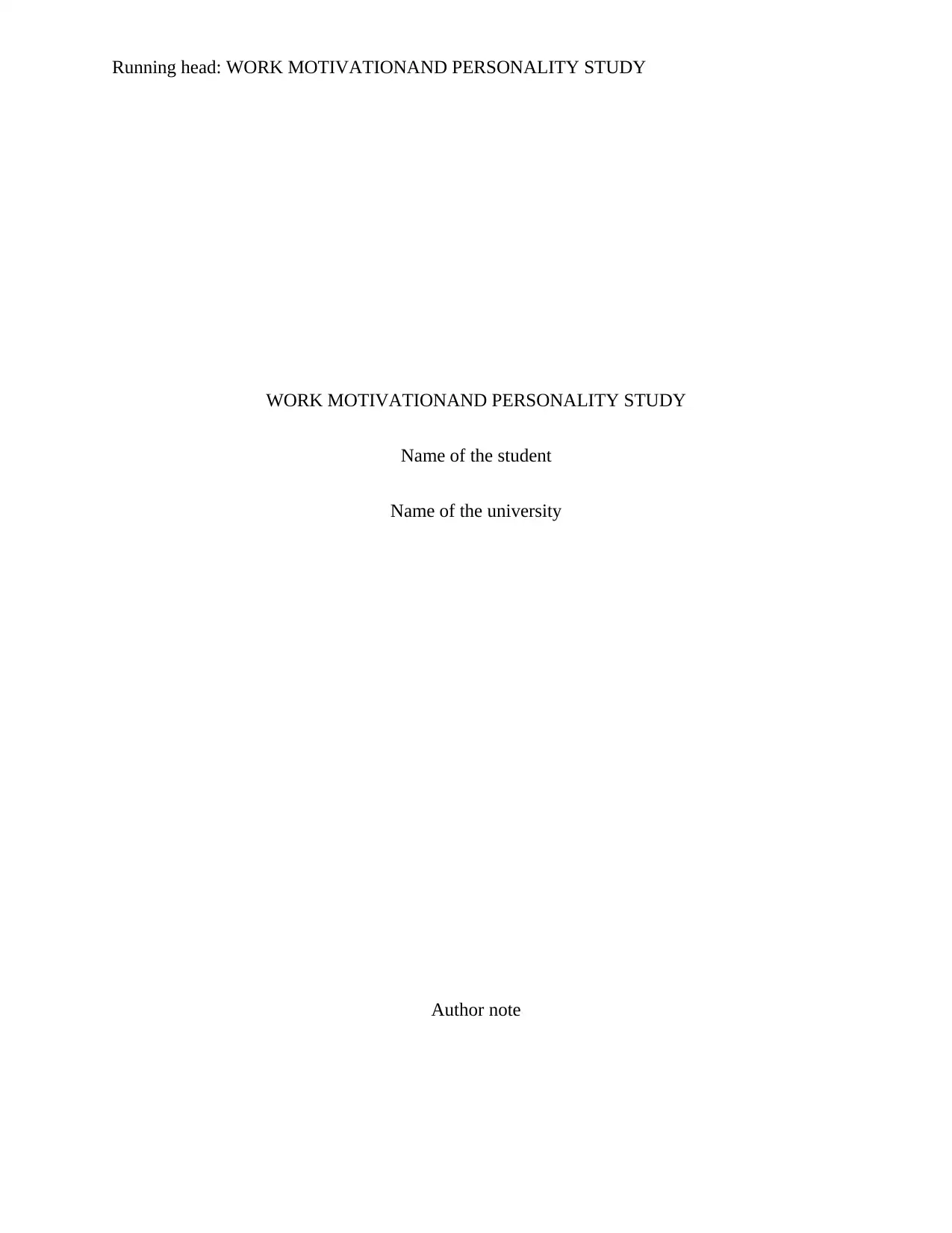
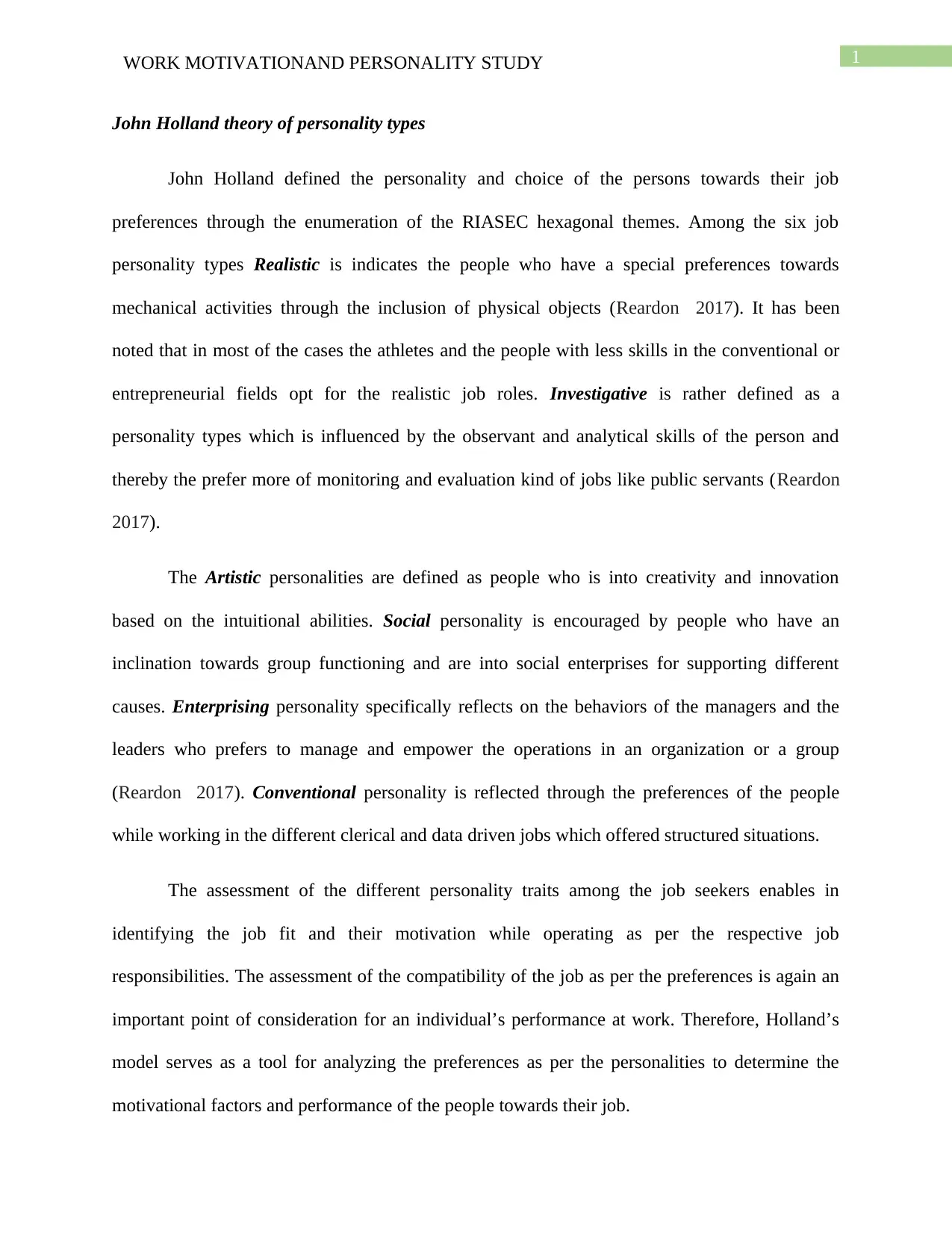
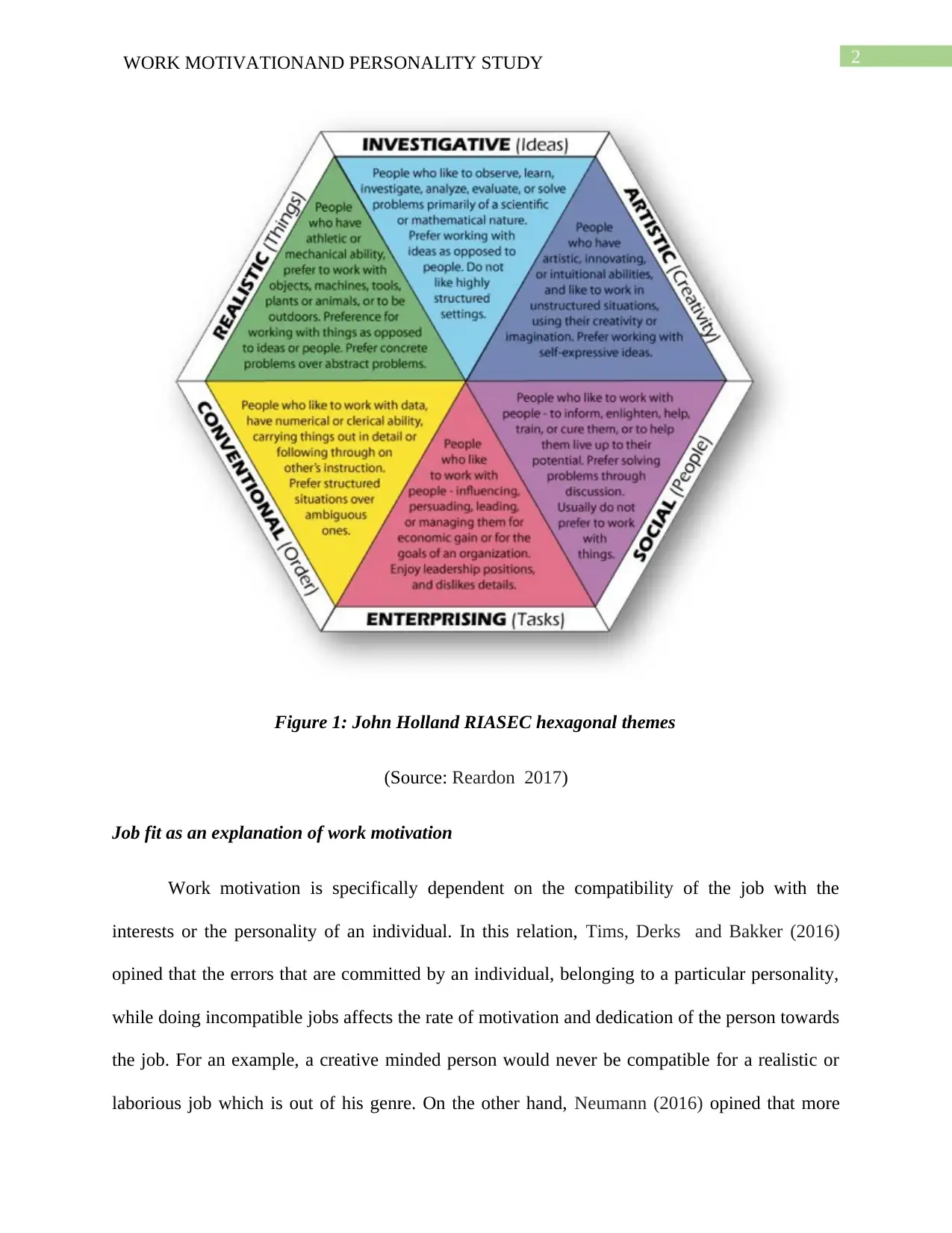

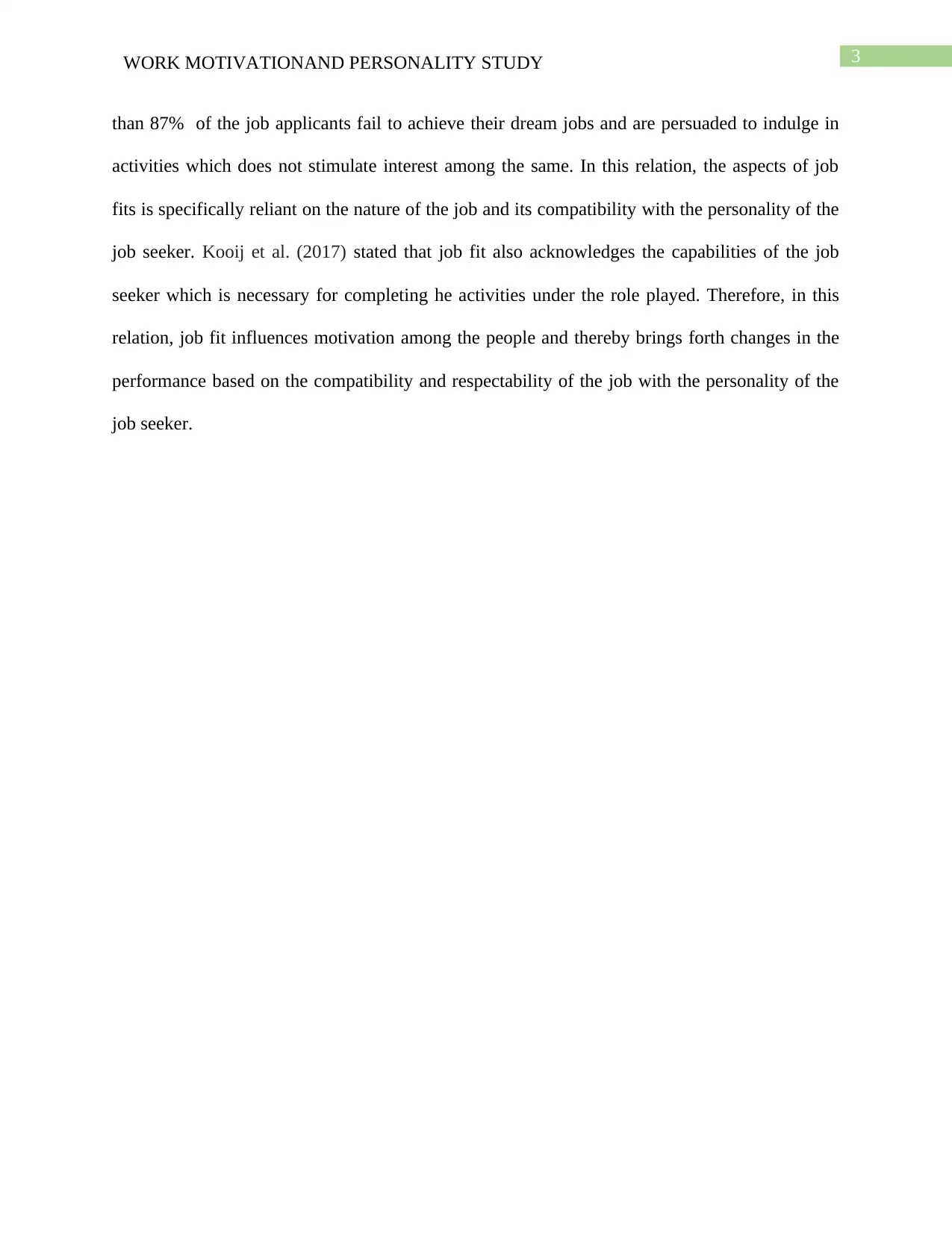
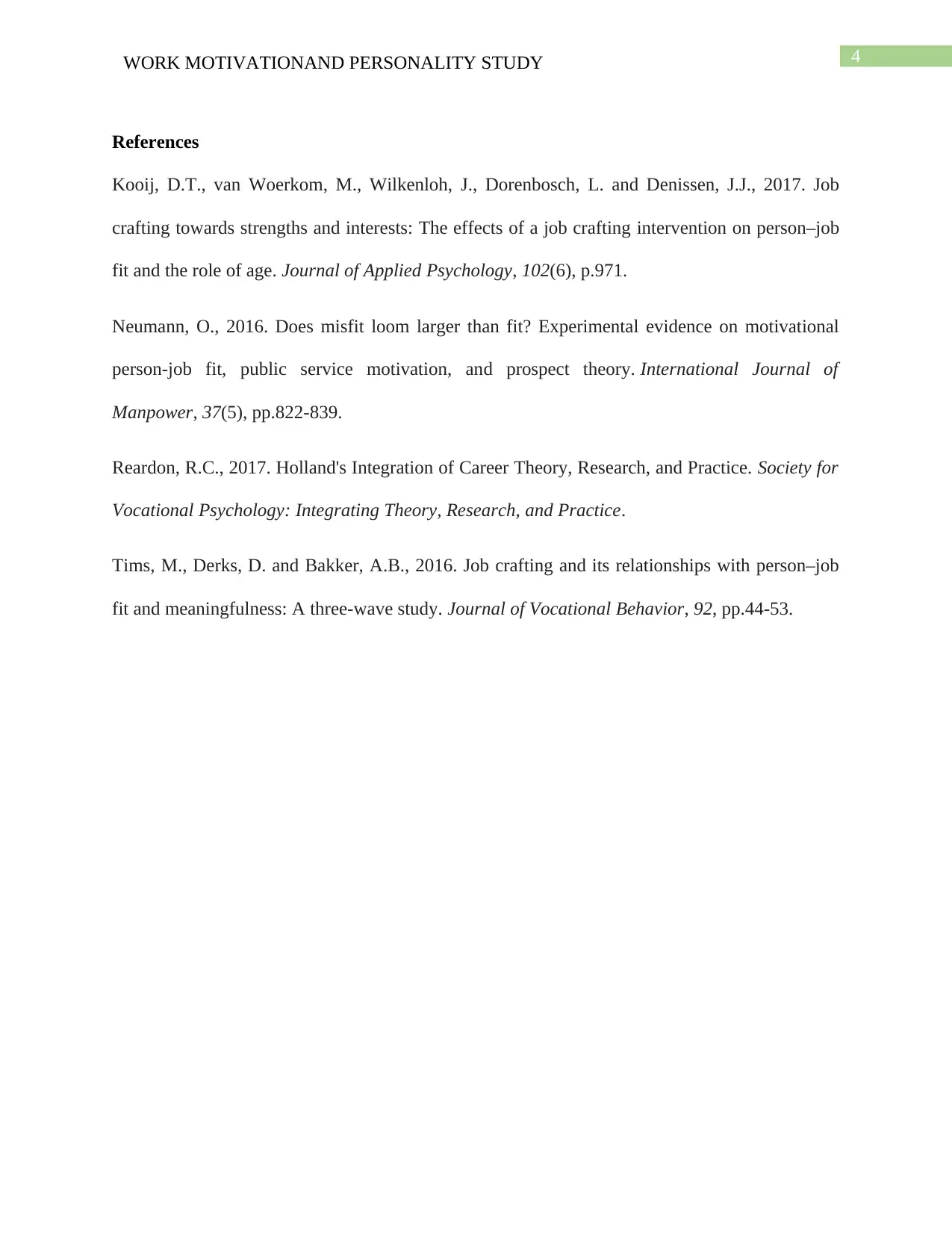

![[object Object]](/_next/static/media/star-bottom.7253800d.svg)